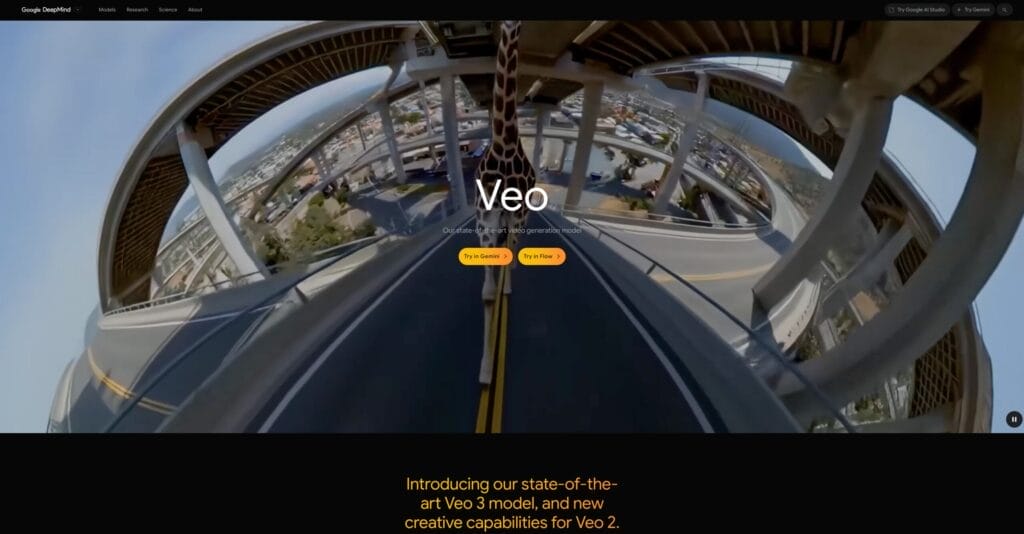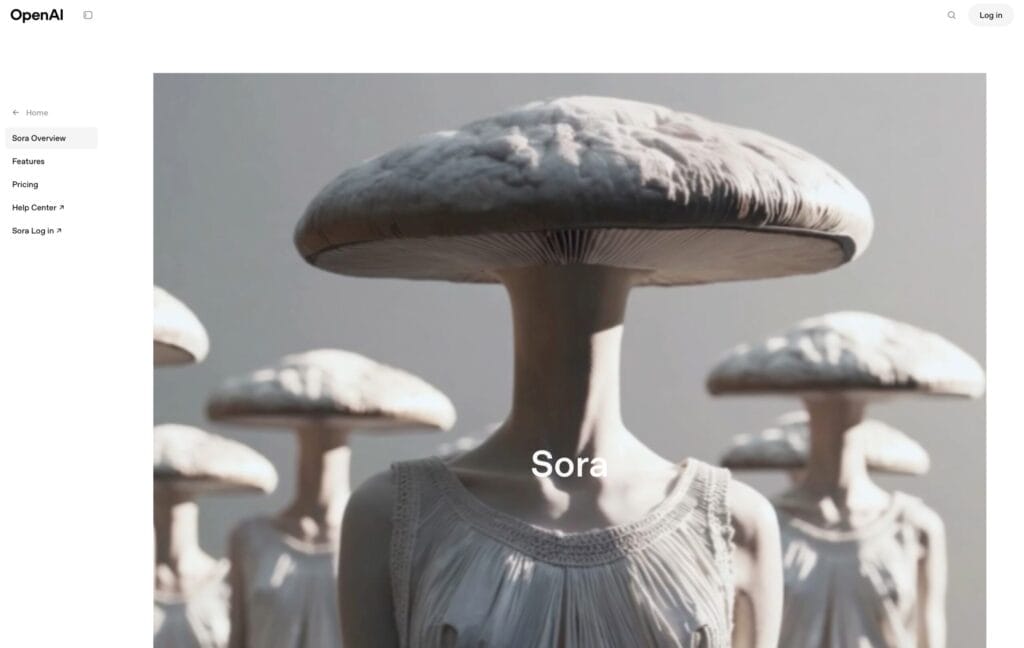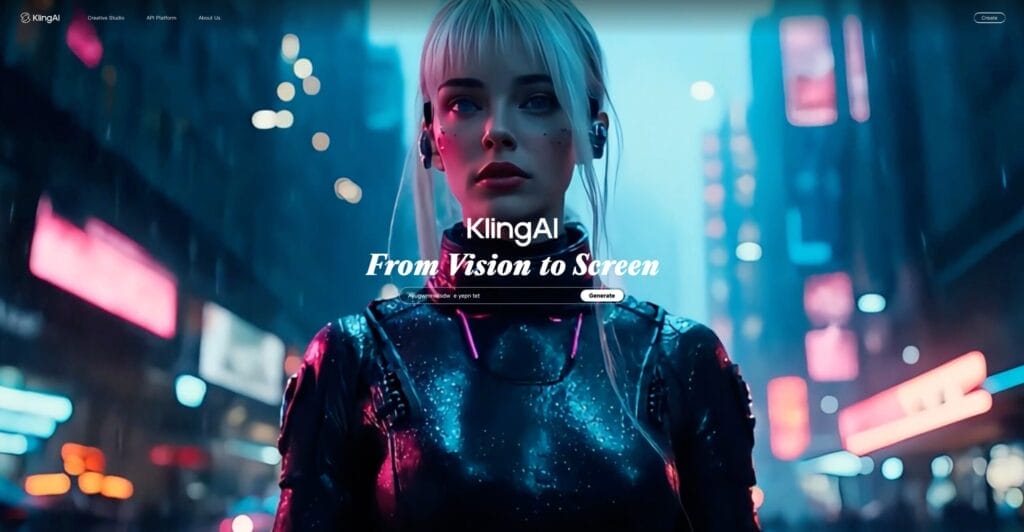In the rapidly evolving landscape of digital marketing, 2025 is a pivotal year for artificial intelligence in video creation. While it’s still early for the technology, the quality of AI-generated video has improved dramatically. The conversation has shifted from a speculative “Can AI make a video?” to a more practical “How can AI video support our marketing efforts?”.
We’re now seeing more choices, and the market is showing clear signs of maturing. Instead of a one-size-fits-all approach, different platforms are emerging with distinct strengths, features, and target audiences. This has led to a split in the market. There are premium, high-cost tools aimed at high-fidelity advertising and brand campaigns. In response, a second tier of more affordable, “good enough” tools has appeared, better suited for the high-volume, ephemeral nature of social media content.
Comparing these new options can be confusing. The purpose of this guide is to provide a straightforward overview of the leading platforms as of June 2025. I will analyze their capabilities, limitations, and costs to help you determine which tool is the right fit for your team’s specific budget, goals, and quality requirements.
The state of play: 3 current trends
To evaluate the current tools, it’s helpful to understand three main trends shaping the market right now. They explain why the tools are developing in different ways and help clarify their respective strengths.
The integration of native audio
The most significant recent development has been the integration of native audio generation. This marks the end of the “silent film era” of AI video. Newer models like Google’s Veo 3 can now generate not only visuals but also synchronized sound effects, ambient noise, and even dialogue with accurate lip-syncing. This development transforms them from simple visual generators into more end-to-end platforms for short-form content, which can drastically reduce the complexity of post-production workflows.
The demand for control and consistency
Leading platforms are increasingly differentiating themselves by the degree of creative control they offer to users. The primitive “prompt-and-pray” approach is slowly being replaced by more directable models that allow for better adjustments to camera movements, object permanence, and most importantly, character consistency across multiple scenes.
Ecosystem integration vs. standalone tools
Similar to image generators, a competition is unfolding between large, integrated platforms and more specialized, standalone solutions. Giants like OpenAI and Google are embedding their video tools into their existing ecosystems, such as ChatGPT and Google Workspace, which leverages their sizable user bases and lowers the barrier to entry. In contrast, players like Runway are positioning themselves as dedicated creative suites designed to integrate with professional workflows used by artists and filmmakers.
To help you navigate the market, the following overview breaks down the capabilities, limitations, and strategic value of four tools. There are many more options available than these. For example, image AI Midjourney just launched their first video generation offering. But Runway Gen-4, Google Veo 3, OpenAI Sora, and Kling are the most discussed, reviewed, and lauded in the AI video generation community. This is why I chose to focus on these.
Furthermore, my goal was to compare services that offer a lot of creative freedom. These four do more than to animate still images. They can create videos in a multitude of styles for a wide variety of use cases.
Runway Gen-4: The artist’s toolkit

Runway has positioned its Gen-4 model as the premier tool for creators who demand fine-grained control and artistic expression, making it well-suited for an in-house creative team or an art director. It is frequently described by third parties as one of the most “consistent and controllable” models available.
Strengths
Runway’s primary strength lies in its “visual memory” feature, which allows a single reference image to generate a character or object that remains more consistent across numerous shots, angles, and lighting conditions. This is of course helpful for any narrative marketing content. Beyond consistency, Gen-4 is good at interpreting stylistic prompts (e.g., “dusk,” “neon-lit alley”) and applying a visual grade. This makes it a possible tool for creating emotionally resonant brand films where mood and visual style are the primary goals. Runway also features Generative Visual Effects (GVFX), designed to produce clips that can be integrated into professional live-action and VFX workflows.
Limitations
The main drawback of Gen-4 is (similar to competitors) its short clip duration, with generations limited to 5 or 10 seconds. This enforces a “composable” workflow where longer narratives must be constructed by stitching together multiple short clips, adding post-production work. A second significant limitation is the lack of native audio; all outputs are silent video files that require a separate process for sound design. Users also report occasional visual artifacts and an “over-smoothness” to the motion that can feel slightly artificial.
Pricing*
Runway is available directly through a multi-tiered subscription model based on a monthly allowance of credits. For developers, it is also accessible via a credit-based API.
- Free Plan: Provides 125 one-time credits, enough for roughly 25 seconds of video from the faster Gen-4 Turbo model. This plan does not include the highest-quality Gen-4 model and videos may have watermarks.
- Standard Plan: Costs $15 per month ($12 if billed annually) and provides 625 credits per month. This is enough for about 125 seconds of Gen-4 Turbo video and removes watermarks.
- Pro Plan: Costs $35 per month ($28 if billed annually) and increases the allowance to 2,250 credits per month.
- Unlimited Plan: Costs $95 per month ($76 if billed annually) and includes 2,250 monthly credits for priority generations, plus unlimited video creation in a slower “Explore Mode”.
- Enterprise Plan: Offers custom pricing and is designed for large teams needing advanced security and support.
Google Veo 3: The new sensation

Google’s Veo 3 is aimed at the higher end of the market and not so much meant for everyday content creation. Its cost and capabilities make it most suitable for a Marketing Director or Brand Manager who needs to prototype digital ads or concepts for television commercials.
Strengths
The model’s single greatest competitive advantage is its native audio generation. Google claims that Veo 3 can produce video with synchronized sound effects, ambient noise, and dialogue with accurate lip-syncing. Beyond audio, the model excels at delivering high-fidelity, photorealistic output at up to 4K resolution. It also includes a suite of creative controls that allow for specifying camera movements and maintaining character consistency using reference images
Limitations
The most significant barrier to Veo 3’s adoption is what third-party analyses call its “prohibitive cost”. Full access requires the Google AI Ultra plan, priced at a steep $250 per month, placing it out of reach for many marketers and small businesses. Like its competitors, Veo 3 is also limited to short clip durations, with standard generations capped at 8 seconds, which requires stitching clips together for longer videos. The high quality also comes with high computational demands, which can lead to slower generation times.
Pricing*
Google primarily offers access to Veo 3 through its consumer subscription plans, but it is also available for enterprise use and is being integrated into other platforms.
- Google AI Pro Plan: This plan costs $19.99 per month. It’s important to note this only provides limited access to “Veo 3 Fast,” a version optimized for speed, not the full-quality model. Right now, just three video generations per day are included.
- Google AI Ultra Plan: This plan costs $249.99 per month and provides full and exclusive access to the highest-quality Veo 3 model, including its native audio features. It includes a monthly allowance of 12,500 credits, enough for roughly 80-83 video generations per month.
- Other Platforms: For enterprise clients, Veo 3 is available through the Vertex AI platform with custom pricing. Google also plans to integrate the model into YouTube Shorts. Additionally, some third-party platforms like SuperMaker AI have begun offering access to the model through their own services.
OpenAI Sora: The video tool of the leading AI platform

OpenAI’s Sora is positioned as a tool for generating narrative content quickly, making it an interesting option for social media managers and content creators. Its strengths lie in its ease of use and its focus on producing a high volume of short-form videos for platforms like TikTok and Instagram.
Strengths
Sora’s primary differentiator is its deep understanding of language and its focus on generating narratively coherent scenes. OpenAI highlights a suite of unique editing tools built into the generation process, such as “Remix” for altering elements in a scene and “Storyboard” for sequencing multiple prompts into a longer video.
Its biggest strategic advantage is its integration into the ChatGPT ecosystem. This makes it immediately accessible to millions of users who are already familiar with the platform, lowering the barrier to entry.
Limitations
According to third-party analysis, Sora offers less granular control over technical details like camera movement when compared to Runway, focusing instead on interpreting the overall narrative of a prompt. The model can also struggle with the complexities of human anatomy, sometimes producing flawed or uncanny results. It’s image-to-video feature is highly flawed to a degree that makes it pretty much unusable.
A significant limitation is the gap between its subscription tiers. The most powerful features, like longer duration, 1080p resolution, and watermark-free downloads, are locked behind the expensive Pro plan. This makes the entry-level Plus plan feel more like a consumer-grade trial, with its watermarked videos capped at 10 seconds and 720p resolution.
Pricing*
Access to Sora is offered through OpenAI’s two primary ChatGPT subscriptions, but it is also integrated into Microsoft’s ecosystem.
- ChatGPT Plus Plan: This plan costs $20 per month and offers limited access with up to 50 “priority” video generations per month. Videos are capped at 10-second duration and 720p resolution, and downloads are watermarked.
- ChatGPT Pro Plan: This plan costs $200 per month and provides expanded access. It includes up to 500 priority video generations per month, plus unlimited generations at a slower, “relaxed” rate. This tier extends the video duration to 20 seconds, increases the resolution to 1080p, allows for up to five concurrent generations, and provides watermark-free downloads.
- Other Platforms: Microsoft offers free access to Sora through its Bing mobile app under the name “Bing Video Creator”. This version has significant limitations, including very long generation times and a credit system based on Microsoft Reward points. For developers and enterprise clients, Sora is also available as an API through the Azure OpenAI Service.
Kling: The pragmatic choice

Kling, developed by Chinese tech company Kuaishou, enters the market as a strong competitor focused on practicality and accessibility. It is positioned as a pragmatic choice for small business owners or marketing teams on a tight budget who prioritize video length and affordability over achieving the absolute pinnacle of cinematic quality.
Strengths
Kling’s most significant advantage is its ability to generate much longer videos than its rivals. The Pro version can create clips up to 2 minutes long, which third-party reviewers have called a “game-changer” for content like product tutorials or detailed showcases. This extended duration is delivered at a high quality, with 1080p resolution and a smooth 30 FPS frame rate.
It is also positioned as a cost-effective alternative, with a functional free tier and more affordable paid plans than the premium offerings from Google and OpenAI.
Limitations
A major weakness is the vast performance gap between its free and paid versions. The free tier is plagued by extremely long generation times, which can take over 15 minutes, and watermarked outputs, rendering it impractical for any professional use case. While its output is capable, side-by-side comparisons make it look less cinematically polished or realistic than clips from Veo 3 or Runway Gen-4.
Pricing*
Kling is offered through its own website, various third-party AI platforms, and via an API. While a free plan with daily credits exists, its slow speeds and watermarks mean a paid plan is essential for any serious work.
- Standard Plan: Costs $6.99 per month and provides 660 credits. This plan removes watermarks, provides faster generation, and includes features like video extension.
- Pro Plan: Costs $25.99 per month and offers a larger allowance of 3,000 credits along with priority access to new tools.
- Premier Plan: Costs $64.99 per month and provides the highest allowance of 8,000 credits.
- Other Platforms: Kling is also available on several all-in-one AI platforms like Pollo AI and cloud marketplaces such as Amazon Web Services (AWS). The company also provides API services to corporate clients and developers.
Conclusion: A decision framework
As the market for AI video generators matures, it’s clear there is no single “best” tool. The right choice depends entirely on your (or your team’s) priorities, from creative control and cinematic quality to budget and the sheer volume of content needed. To help you make an initial choice and avoid analysis paralysis, here is a scenario-based framework based on common marketing goals.
- If your priority is creating stylized, cinematic brand films and you have a hands-on creative team… Start with Runway Gen-4. Its control over mood, style, and visual consistency makes it a strong choice for projects where aesthetic is key.
- If your priority is producing a high-value ad concept with dialogue and you have a significant budget… Invest in Google Veo 3. The native audio and its photorealistic output can justify the high cost for flagship projects that need to make a major impact.
- If your priority is rapidly producing a high volume of narrative-driven social media content… Start with OpenAI Sora. Its user-friendly tools and integration with ChatGPT make it a candidate for social video production.
- If your priority is creating longer-form videos like product tutorials on a limited budget… Start with a paid plan for Kling. It offers an excellent value proposition when balancing video length against cost.
